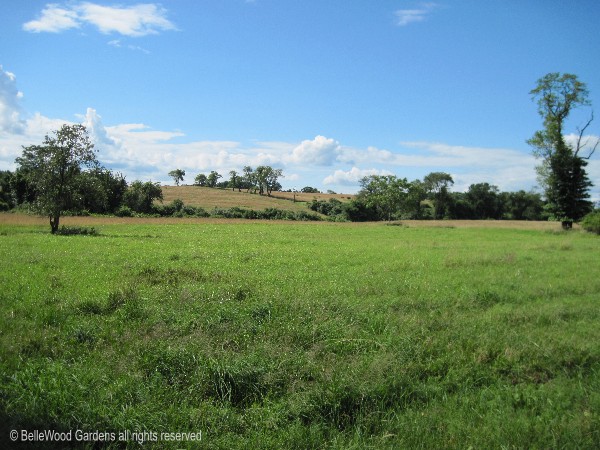
Saturday, 11 July & Sunday, 19 July, 2009
Hay Field, Flower Field

Make hay when the sun shines. It's the time of year when farmers keep a close eye on the weather.
Hay is needed to feed livestock. Its sale is how some people qualify for their farmland assessment.
Hay is most nutritious when it is in the boot stage, with seed heads just emerging. Stemmy, and
it's less useful. Whatever, it must be cut, dried, and baled. Baled too damp, and it can spontaneously
burst into flame and burn down the barn. Cut and then rained on before baling it gets moldy, useless
for anything but perhaps mulch. And this has been a wet summer, difficult to cut the lawn let alone hay.
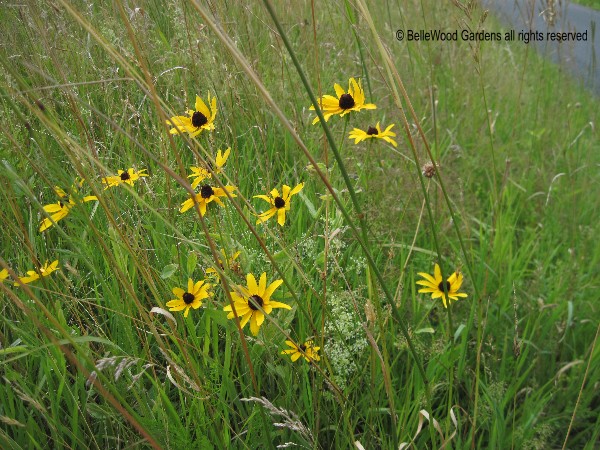
Flowers in the hay field. Rudbeckia hirsuta, black-eyed Susan, is an annual or short-lived perennial.
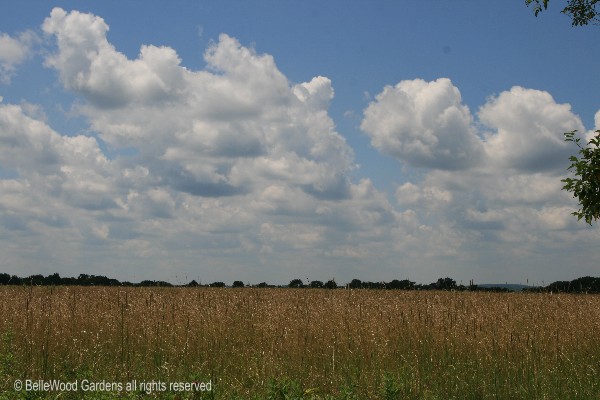
Grass turning brown, heading up, ready to cut.
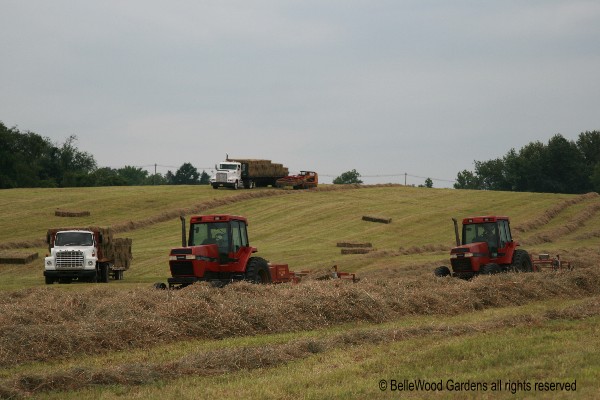
11 July. The hay was cut and tedded. It's dry and ready to bale
and the sky is gray, with rain in the forecast. The men are pushing
to get it done, using five machines: two balers, a front-end loader,
two trucks and trailers, everyone working to get the hay in.
Make no mistake this is hard, hard work.
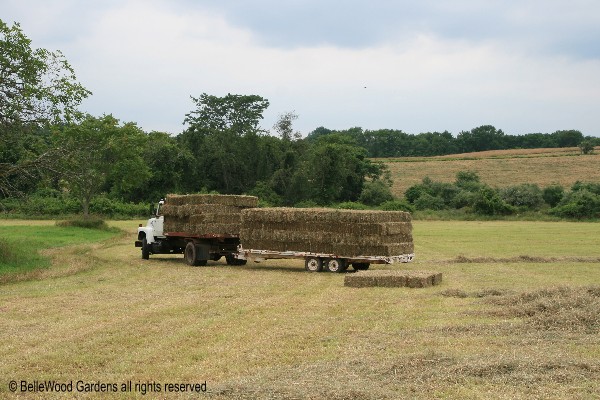
Heading for the barn. These big heavy bales have to be unloaded,
stacked, then out to the field to pick up another load. Again.
And again. Until it is done. If the rain holds off.
.
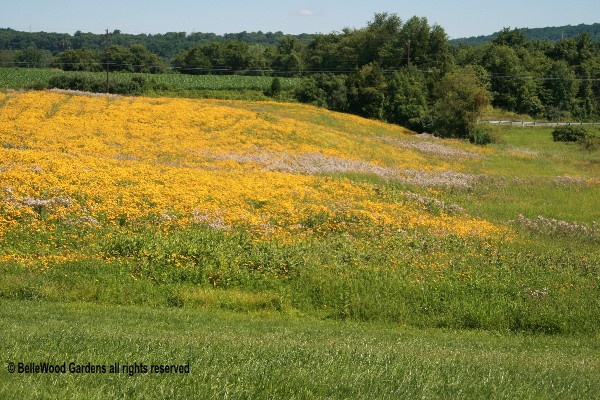
Same year, different field. A field full of flowers. What's going on?
This was a difficult field to hay. It slopes down to a small stream and there's
a high water table. If there is rain, the soil can be so wet that a tractor slips and
gets bogged down. And it wasn't the best quality hay. So Peter decided that
it would be a wildlife conservation area, planted to attract birds and butterflies.
The hayfield area, to a point well back from the stream, was twice sprayed
with Round-Up® to kill the existing vegetation. That was over a year ago.
Four different grasses, such as big blue stem and switchgrass, and four
forbs, non-grass flowering plants, including black-eyed Susan; butterfly weed,
Asclepias tuberosa; and prairie coneflower, Echinacea purpurea. Two problems:
no one thought about the tremendous reserve seed bank of unwanted plants
and the fellow who dumped the eight bags of seed to be planted into the drill
didn't mix them up. So last year, the flower field's first year, was very weedy.
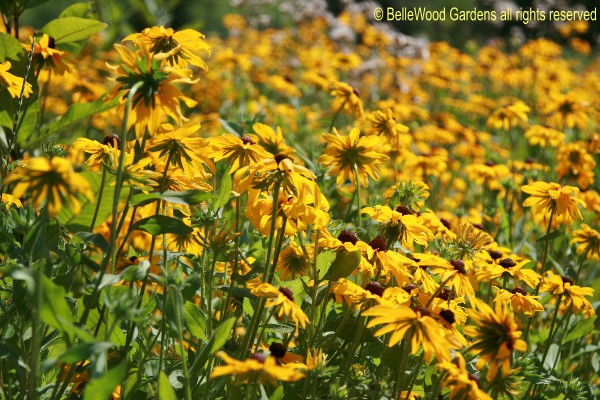
This year, it's second year, there's a tremendous display of black-eyed Susan,
Rudbeckia hirta, which, if you remember, is an annual / short-lived perennial.

When Peter and I started walking around and through the area there were other plants:
the occasional prairie coneflower, Echinacea purpurea, popular with butterflies for nectar
and winter seed source for birds and small mammals. Slower to reach blooming size, longer lived.
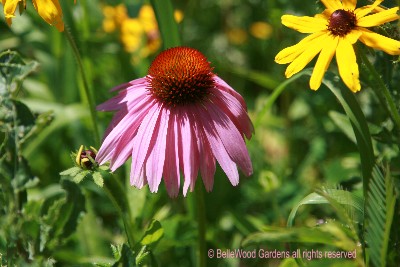
.
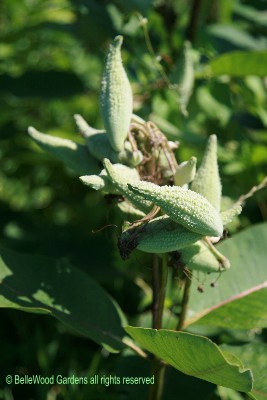
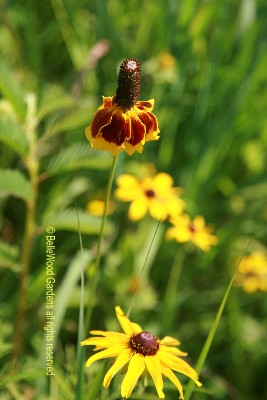
On left: Lots of milkweed, Asclepias syriaca, making seed pods. These, I believe, are plants that were already present.
We did see orange flowers on two rather small plants of butterfly weed, Asclepias tuberosa. Again, slower to maturity.
On right: Several Mexican hat plants, Ratibida columnaris, in bloom. Attractive, welcome, not included in seed order.
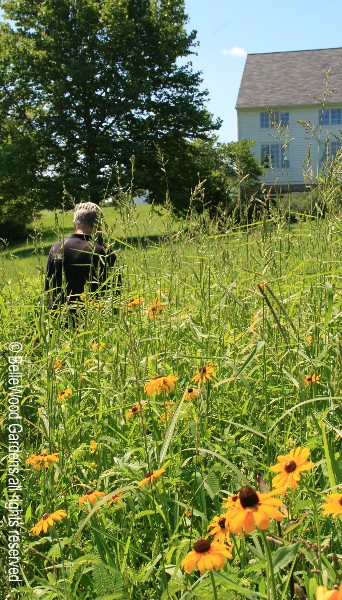
Next year will be different. Likely enough, the black-eyed Susan will not be as prevalent,
the other, more perennial forbs should make a better display. The grasses, growing nicely
further up the slope, will also gain with another successful year's growth under their roots.
Patience is the name of the game in turning a hayfield around into a flower field. It will come.